Everything on board a cruising boat is a balance between need or convenience on the plus side and space, weight and energy/water consumption on the minus side. But what it mostly boils down to in the end is power usage.
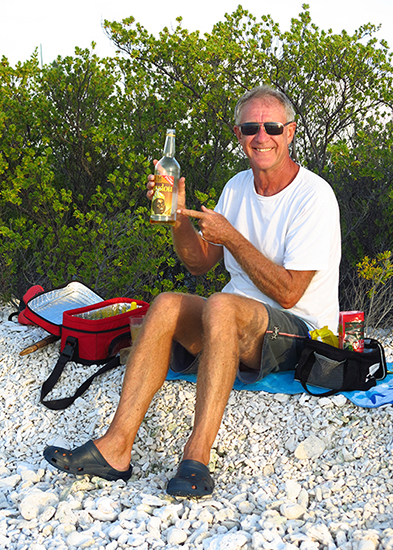
We have four methods to generate power. The wind generator and solar panels are obviously the best option as their energy source is free of charge! On a good windy day (between 15-20 kts) Baddie, the wind gen, generates about 15 amps and the solar panels kick in a bit when the sun is shining right above. On perfect days these two can just about cover our daily needs but when climatic conditions are less than perfect we resort to less cost-effective, less environmentally friendly options. Running the engine generates 40 amps on average but it’s not that great for the engine. We also have Wanda the Honda, a small generator which runs on petrol and generates 30 amps. When you do the maths it turns out that Wanda is more fuel efficient. . . but petrol costs twice as much here as diesel which we get tax free.
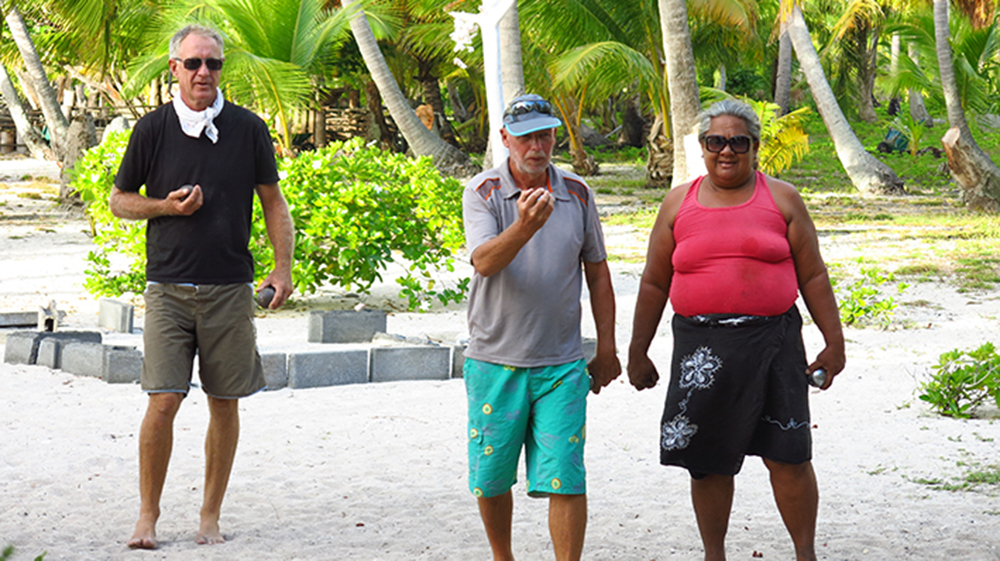
We also have to be conscientious about water usage. We carry 800L of fresh water and use about 40L a day, so we only carry enough water for 20 days. The Tuamotou’s are very small, very remote and have very little rainfall. Fresh water is gathered from the roofs and some houses have bores which provide brackish, very calcareous water (OK for the garden) but freshwater is quite scarce here. As filling up our water tanks is not really an option here we use our watermaker which turns seawater into fresh water by reverse osmosis. Our water maker makes about 20L/hour which uses 10 amps.
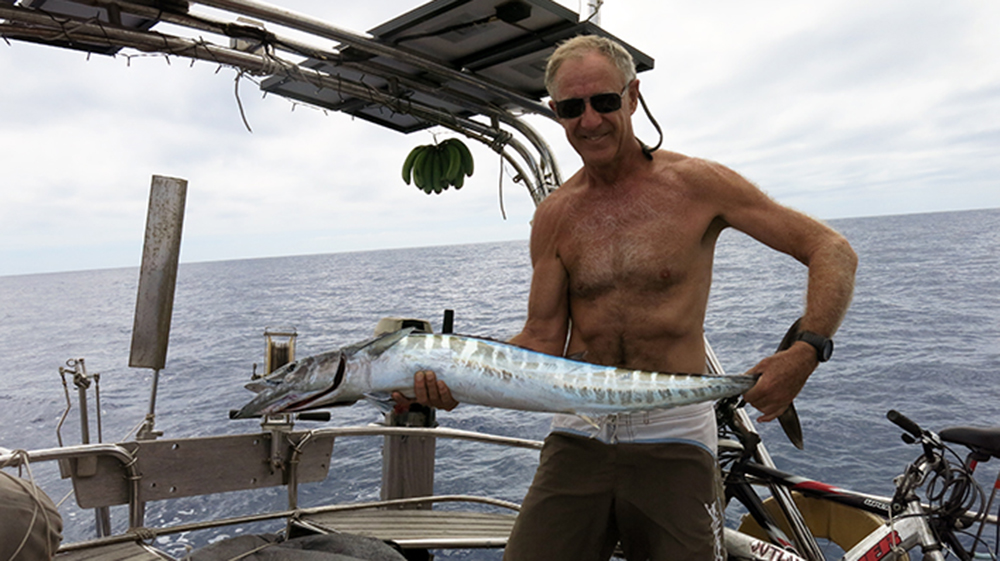
Supplies are brought out to the islands on the coastal freighter, named the Cobia III. Deliveries are weekly (or sometimes fortnightly or monthly) and much anticipated. Fresh food gets snapped up pretty quickly when the boat comes in. To supplement the scarce fresh milk the “balance” comes into play again. UHT milk tastes better but is heavy and takes up lots of space; dried milk is lighter but uses up fresh water. Likewise for other products; tinned chickpeas are heavy and take up twice as much space as dried chickpeas but they use fresh water for soaking and more gas to cook them! Now you’re getting the picture of what we ponder about!!!
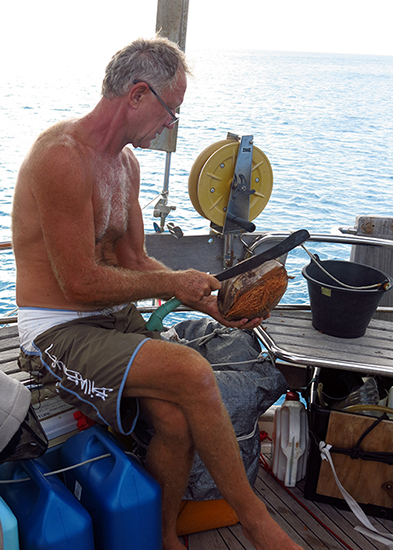
Of course what we really need to do is live off the local products available on the atoll, in summary fish and coconuts. It’s not surprising that the national dish of French Polynesia is poisson cru – sliced raw fish marinated in coconut milk!!! Neil loves pottering with lures and reels and his fishing skills have paid off with a regular supply of wahoo, tuna and the occasional short billed spear fish. These fill the freezer for a couple of weeks and taste delicious. Now on to coconuts . . . until I got to Tahiti I did not know how to get the milk out of a coconut! All you need is a parang, a shredder which can be bought from the local market, and a bunch of coconuts. Neil‘s an expert at wrenching the husk off with a parang. The nut is then split and the white meat inside is shredded using the shredder which is nailed to a plank which you sit on with the shredder placed carefully between your legs. The shredded meat (with the odd bit of blood or flesh) is then soaked in water and squeezed to extract the milk. Not a job for the faint-hearted!
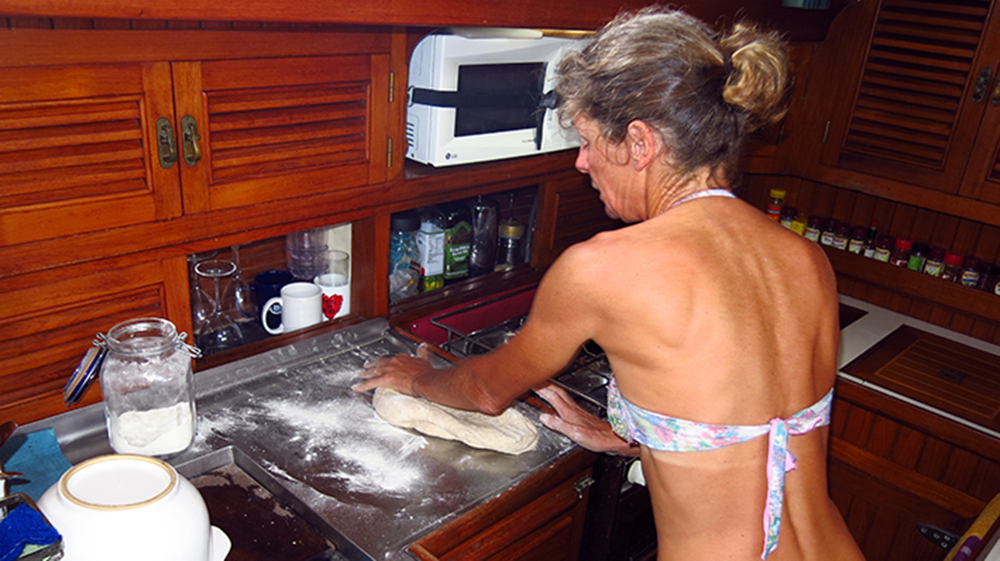
One of the remarkable things about French Polynesia is that baguettes are readily available and almost the cheapest form of food. Even villages on the smallest atolls have a bakery which churns out the classic french loaf – a subtle reminder of colonialisation! So fresh bread is available but in the most scenic anchorages in the corners of the atolls where there are neither shops nor baguettes I have to make bread. If I start on the dough at 9am the bread will be baked by about 3pm! I’m not sure why it takes me so long but time is one of the things we have plenty of!
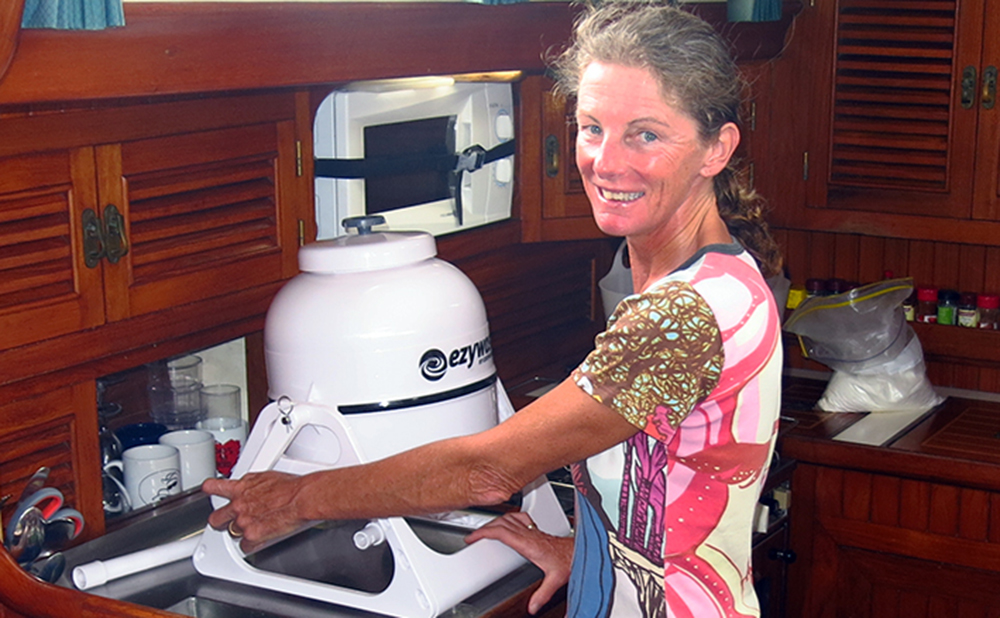
Other domestic chores which take a few moments on shore take quite a lot longer on board. We have a manual washing machine which is basically a plastic barrel on a stand with a big handle. Doing a 2kg load uses about 12L of water and requires hours of turning, rotating and wringing – a couple of loads is a 30 minute workout!
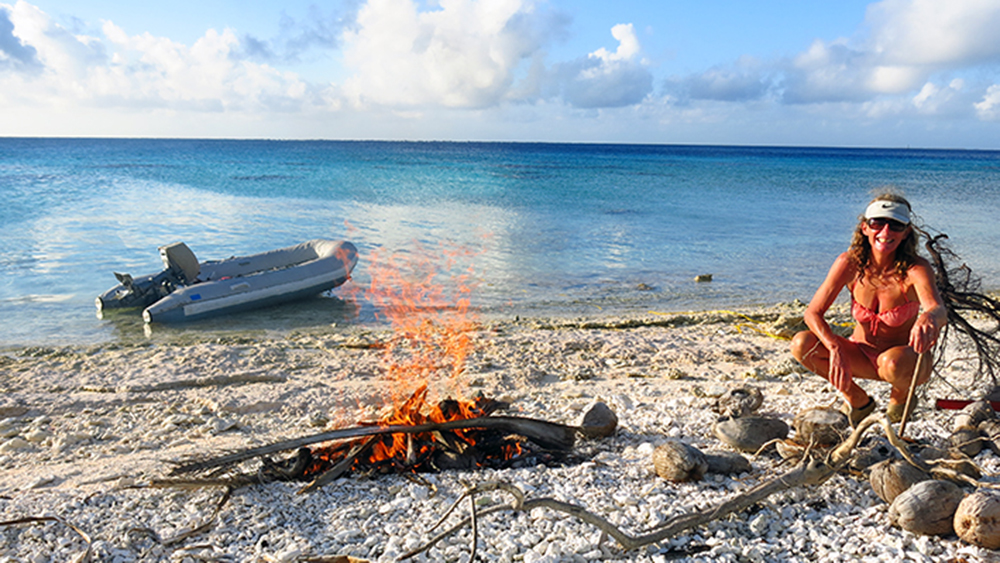
Waste management is another thing which yachties, unlike people on shore, talk about at parties! In remote locations we chuck all food waste and anything made of natural products such as cans (aluminium), bottles (glass) and paper (wood) over the side. We try to limit the amount of plastic on board, most of which comes from water bottles and food packaging. Obviously we can’t chuck this overboard so when we get to shore we have a nice beach bonfire and burn it. I realise this is not an environmentally responsible practice but what is the alternative? There is no rubbish collection service here so if we left it on onshore someone else would have to burn it. If, by some quirk of fate, my bag of rubbish got returned to Tahiti on the good old Cobia III, it would almost certainly end up in a land fill outside Pape’ete. So I think taking responsibility for my own rubbish is better!
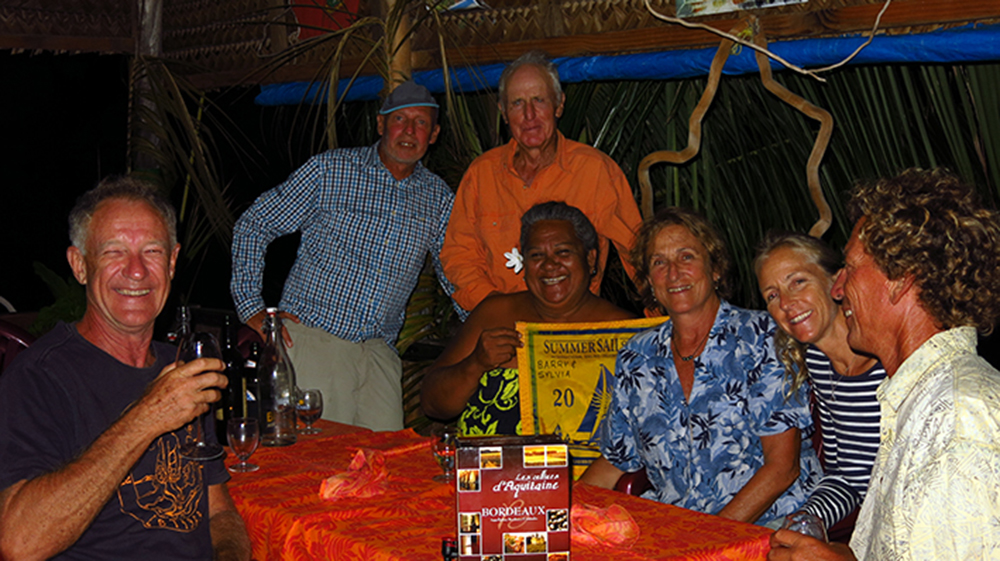
Limited fuel, water and food are not just issues for yachties and remote islanders but are concerns for the earth as a whole and learning how to manage them is a challenge for all of us . . . and there’s still plenty of time for all the fun stuff: diving, snorkelling, cycling and messing about with sails. When there’s a few boatloads of people in the anchorage we get together for sundowners, a beach bonfire, a game of boules or a potluck dinner. Life is good!!
Suzy and Neil
